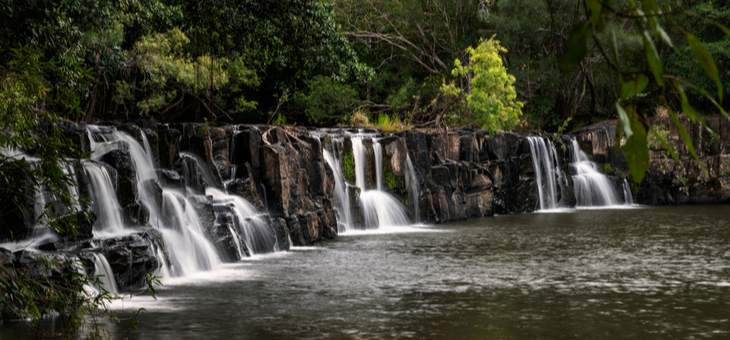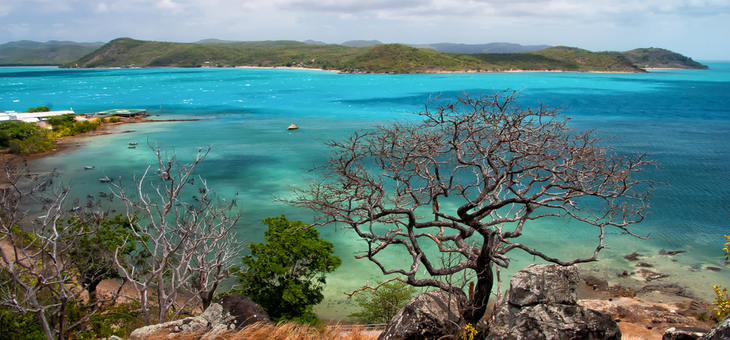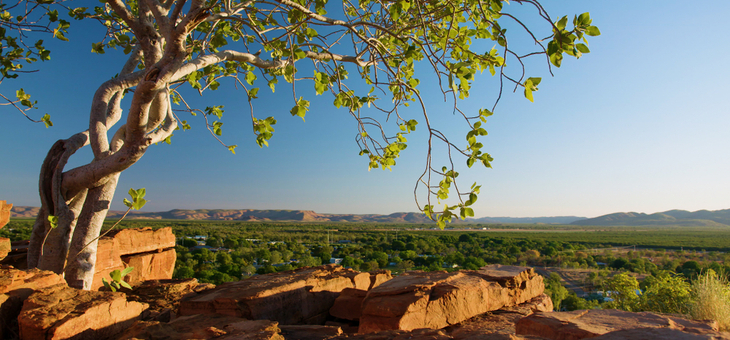Winter is here. Last week, Sydneysiders shivered through the coldest day we have experienced in 37 years. The day had a projected high of just 11 degrees C but failed to even reach that, instead topping out at a chilly 10.3 degrees C.
The last time it was that cold was way back in 1984.
So, if you’re tired off donning the hat and gloves, here are six places in Australia that will help you escape winter.
Kakadu, NT
Average daily temperature in July – 30 degrees C
Kakadu has rather pleasant temperatures year-round which rarely drop below 20 degrees C.
While there are two main seasons in Kakadu; the wet and dry, Kakadu’s Aboriginal owners recognise six seasons, signposted by subtle changes in weather, what plants are in flower and which bush foods are abundant.
No matter the season you visit in, there will be plenty to do. Lace up your boots for bushwalking, grab the binoculars for birdwatching or take a scenic flight over the waterfalls.
If you’re looking for something more adventurous, jump in a high-clearance four-wheel drive to explore one of the region’s least-visited attractions: Jarrangbarnmi (Koolpin Gorge).
Read more: The ancient secrets of Kakadu
June to August are the prime times to visit Kakadu as it’s the dry season.
Cooktown, QLD
Average daily temperature in July – 26 degrees C
It’s not just the story of Captain James Cook that you’ll find here, but a rich Indigenous history and plenty of evidence that Cooktown was booming in its gold-rush glory days.
There’s plenty to do in Cookie in the winter, and the nice thing is that you won’t be too hot to do them. Visit the Lion’s Den Hotel for an iconic pub experience, drive the Bloomfield Track, go charter fishing, or try to spot a croc. Even the Visitor Information Centre is beautiful here, backing onto Queensland’s oldest regional botanic gardens (est.1878).

The best time of year to visit Cooktown for warm-weather activities is from early May to early November, just beware of the wind.
Broome, WA
Average daily temperature in July – 29 degrees C
It’s no secret that the tropics lend themselves to a laid-back lifestyle and Broome’s Cable Beach is the perfect place to relax. It’s justifiably world-famous for its 22km of sun-kissed white sand, turquoise water and spectacular Indian Ocean sunsets.
But if you’d like a more action-packed holiday, Broome won’t disappoint – you can choose your own adventure from 4WD tours to wildlife cruises to fishing charters.
Take a camel ride at sunset on the beach, watch a movie under the stars at the Sun Picture Theatre, and visit Pearl Luggers for a glimpse of the town’s pearling history.
Read more: Travel SOS: Broome on a budget
The dry season in Broome runs from May to October and is typically the most popular time to visit as humidity levels are low and the nights are cool.
Thursday Island, QLD
Average daily temperature in July – 27 degrees C
Take the trip to Thursday Island, via Horn Island, either by plane from Cairns or Bamaga or by boat from Bamaga and you’ll be rewarded with a charming tropical island boasting a number of interesting and unusual historic buildings.
Visit an old fort built at the end of the 19th century when Russia was seen as a threat; look around the smallest cathedral in the world (reputedly); or visit the Japanese cemetery with over 700 graves which is a sad reminder that the island once had a booming, but hugely dangerous, pearl fishing industry.

Thursday Island is one of 274 islands that lie between the northern tip of Queensland and Papua New Guinea in the Torres Strait.
It might not be as warm as you would expect but with an average July temperature of 27 degrees C it’s a great location for a winter getaway.
Kununurra, WA
Average daily temperature in July – 31 degrees C
Kununurra means ‘big water’ in the local Indigenous language and there’s no shortage of it to explore. Lake Kununurra (on the Ord River) is a freshwater man-made reservoir full of barramundi and freshwater crocodiles. The stretch of water is great for fishing, birdwatching, kayaking, water-skiing and boating.
The sunsets here are spectacular. Find your perch on the shore and have your camera ready early though, the sun goes to bed around 4:30pm at this time of year.

The dry season in Australia’s Top End runs from late April to October and brings clear blue skies, balmy nights and warm days.
Darwin, NT
Average daily temperature in July – 31 degrees C
Tropical Darwin is Australia’s most northerly (and most individual) state capital. Closer to Bali than Bondi, its laid-back, small-town vibe makes for the perfect winter escape.
The dry season is the best time to spot giant turtles as they lumber out of the sea to nest. The eggs hatch later in the season, so plan your trip accordingly.
Read more: Capital drives: Darwin
The Darwin Festival (5-22 August) is another must-see, with an action-packed, two-week calendar filled with local and touring artists, outdoor concerts, workshops, theatre, dance music, comedy and cabaret, film and visual arts.
Head to Mindil Beach Sunset Market for delicious international food, fun shopping, and fantastic views, or check out the Museum & Art Gallery of the Northern Territory for incredible Aboriginal and Torres Strait Islander art.
The dry season, stretching from May to September, is the perfect time to visit for blue skies with a balmy breeze.
Where are you heading this winter? Share your favourite winter getaways in the comments section below.
If you enjoy our content, don’t keep it to yourself. Share our free eNews with your friends and encourage them to sign up.

